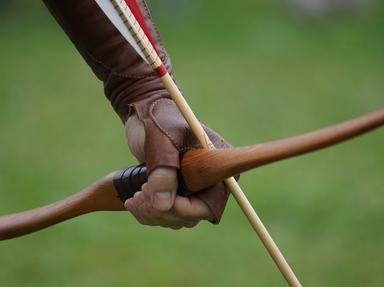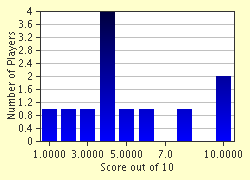Quiz Answer Key and Fun Facts
1. Within the United Kingdom, target archery is governed by the Grand National Archery Society (GNAS). What are the initials of archery's international governing body?
2. An archery competition is usually referred to as a 'round'. Under international rules these are known as 'FITA Rounds'. What term is used to refer to a match shot under GNAS rules?
3. 'Bows so constructed that a mechanical advantage is obtained by the use of accessory limbs, levers, pulleys, eccentrics or similar devices'. Of what style of bow is this a description?
4. In archery terms, what are Portsmouth, Bray, Worcester and Vegas?
5. The diameter of the two standard outdoor target faces under GNAS rules are which of the following?
6. When erecting your target stand and fitting the boss, you should aim to angle your targets as close to how many degrees from the vertical?
7. (Petticoat), white, black, ****, red and gold. Which colour is missing from this sequence?
8. In archery terms, what is a 'Kisser'?
9. On a standard target the centre of the gold (often, but incorrectly, termed the 'bullseye') is marked with a small cross. Don't let this question needle you, but by what name is this cross known?
10. Your club has organised an event that may be attended by archers from all over the region and, most likely, much further afield. What would be the minimum standard of judge required under GNAS rules to adjudicate on your shoot?
Source: Author
SisterSeagull
This quiz was reviewed by FunTrivia editor
ozzz2002 before going online.
Any errors found in FunTrivia content are routinely corrected through our feedback system.

